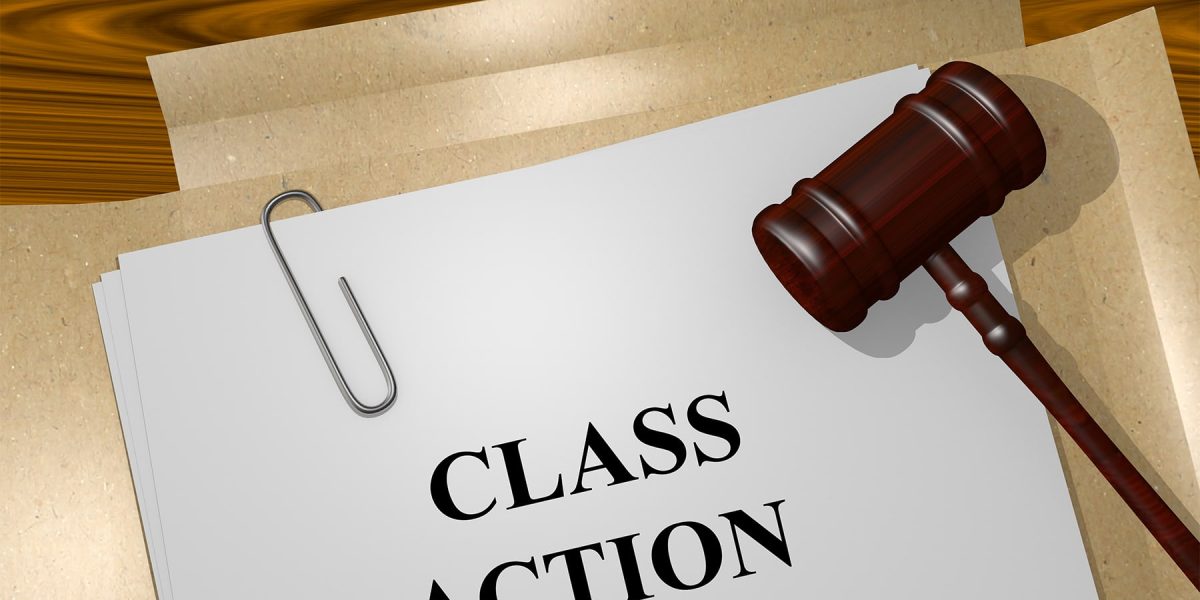BioVie Class Action Lawsuit Unveiled: Your Legal Resource
Exploring Class Activity Lawsuits: What You Required to Know
Class activity suits have become increasingly widespread in today's lawful landscape, with individuals joining pressures to seek redress versus companies and firms. In this discussion, we will explore the ins and outs of class action suits, clarifying their meaning, the needs for declaring, and the prospective benefits and disadvantages entailed. We will certainly dig into the steps involved in a class activity suit and examine some recent spots situations that have shaped this location of regulation. Understanding the intricacies and subtleties of class action suits is essential for anybody looking for justice in a cumulative fashion, so allow's start our expedition together.
The Interpretation of Class Action Legal Actions
Exactly what is the interpretation of a course action lawsuit? A class activity claim is a lawsuit submitted by a group of individuals who have similar claims against an offender. It enables a multitude of individuals, called the class members, to collaborate and pursue their insurance claims jointly, as opposed to each individual declaring a different lawsuit. Class action claims are typically brought when the number of prospective complainants is also large for private legal actions to be useful. They are typically utilized in instances involving consumer security, product obligation, securities fraudulence, and work concerns.
Among the crucial elements of a class action claim is that the lead plaintiff, additionally referred to as the course agent, stands for the passions of all the course participants. The court assigns the lead complainant based on their capability to relatively and adequately represent the course. The lead plaintiff functions carefully with the class action lawyer to seek and build a strong instance compensation or other treatments in behalf of the entire course.
In order for a course activity claim to continue, the court should license the class. This indicates that the court establishes that the claim satisfies certain needs, such as numerosity (a big enough number of course members), commonness (usual inquiries of regulation or fact), typicality (the cases of the lead plaintiff are common of the class), and competence of representation (the lead complainant and course advise are capable of standing for the course's passions) Once the course is licensed, the lawsuit can move ahead, and any type of judgment or settlement reached will apply to all course members unless they pick to opt-out.
Course action suits serve a crucial function in providing access to justice for individuals that may not have the resources to seek their insurance claims independently. They likewise promote effectiveness in the legal system by consolidating similar insurance claims right into a solitary action, decreasing the burden on both the court and the celebrations involved.
Needs for Submitting a Course Action Claim

Another need is that the course should be adequately numerous. The specific variety of class participants needed might vary depending upon the jurisdiction and the nature of the instance. Nonetheless, it is generally expected that the class should be big enough that signing up with all the private plaintiffs right into a single suit is more effective than having numerous separate legal actions.
Furthermore, it is important that the class rep, who is the specific or entity bringing the legal action in support of the class, has common claims and defenses to those of the course members. The rep needs to likewise be able to adequately and relatively stand for the interests of the whole class.

Advantages and Downsides of Class Activity Legal Actions
Class action lawsuits provide both benefits and drawbacks for complainants and offenders associated with the lawful procedure. On the one hand, one of the substantial advantages of course activity claims is that they offer a efficient and cost-effective way for people with similar cases to pursue justice jointly. By Archer-Daniels-Midland class action lawsuit combining countless similar instances right into one legal action, course actions simplify the legal procedure and save time and sources for both defendants and plaintiffs.
An additional benefit of course activity claims is that they permit individuals with limited sources to seek payment for their damages. In situations where the potential recuperation is tiny, individual lawsuits might not be economically feasible. By joining pressures in a class activity, plaintiffs can pool their resources and raise their chances of obtaining a reasonable resolution.
Furthermore, course actions can advertise social adjustment by holding companies answerable for their activities. By bringing interest to widespread misbehavior or faulty products, course activities can push companies to change their practices, enhance product safety, or apply reforms.
Nevertheless, class actions likewise have downsides. One possible negative aspect is that private plaintiffs may have restricted control over the litigation process and the utmost result of the situation. The lead plaintiffs and their attorneys usually make crucial decisions in support of the whole class, which may not constantly line up with the individual rate of interests of each course participant.
In addition, course actions can be time-consuming and prolonged, frequently taking years to reach a resolution. The complexity and size of these More Bonuses lawsuits can bring about hold-ups and prolonged litigation, which can be annoying for both defendants and complainants looking for a prompt resolution.
Steps Involved in a Course Activity Claim
The process of a course activity suit normally begins with the identification of a prospective class and the filing of an issue. When a group of people that share comparable cases against an offender is determined, the lead plaintiff, or course agent, submits a problem in support of the entire class. This problem outlines the supposed misbehavior and seeks problems or other alleviation for all participants of the class.
After the issue is submitted, the court will certainly determine whether the situation satisfies the requirements for course certification. These demands typically consist of numerosity (a large sufficient class), commonality (similar lawful cases), typicality (the lead plaintiff's claims are representative of the class), and competence of representation (the lead plaintiff and their lawyer can effectively represent the class's interests)
If the court licenses the class, notification is given to all possible course participants, offering them the chance to opt-out if they desire to pursue their own individual insurance claims - BioVie class action lawsuit. If an enough number of class participants stay, the case will proceed to the discovery stage, where both sides gather proof and information appropriate to the claims
Adhering to discovery, the events may participate in settlement arrangements or proceed to trial. If the instance goes to test and the class prevails, the court will certainly determine the appropriate damages or relief to be granted to the class members.
Recent Landmark Course Activity Legal Actions
With a solid understanding of the steps associated with a course action lawsuit, it is currently crucial to take a look at some recent spots instances that have actually made a significant impact in the lawful landscape. BioVie class action lawsuit. These instances have not only formed the means course activity claims are conducted however have likewise brought about changes in various industries
One such site situation is the Volkswagen discharges rumor, which led to the largest class action negotiation in automobile history. This deceptiveness influenced millions of customers worldwide, leading to a course activity claim.
Another notable instance is the Johnson & Johnson talcum powder suit. Countless females submitted suits against the business, declaring that their baby powder products created ovarian cancer cells. In 2018, a court granted $4.7 billion in problems to 22 complainants. This situation elevated issues concerning the security of talcum powder and motivated Johnson & Johnson to customize their item labeling.
These recent site instances show the power of course activity claims in holding companies liable find out for their activities and looking for justice for affected individuals. They work as examples of how class action legal actions can cause significant adjustments and shield the civil liberties of customers.
Conclusion
In final thought, course action suits are a lawful system that allows a team of people to jointly look for justice for an usual grievance. Comprehending the needs and steps entailed in submitting a class activity lawsuit is critical for individuals looking for to seek this legal method.
One of the vital components of a class action suit is that the lead plaintiff, also known as the class agent, stands for the rate of interests of all the course members.In order for a course action suit to proceed, the court should accredit the class. This implies that the court identifies that the legal action satisfies certain demands, such as numerosity (a huge sufficient number of course participants), commonality (common concerns of legislation or truth), typicality (the cases of the lead complainant are common of the class), and competence of representation (the lead complainant and course guidance are capable of representing the course's passions) When the course is licensed, the suit can relocate onward, and any kind of judgment or negotiation reached will apply to all course participants unless they select to opt-out.
The process of a course action suit typically begins with the recognition of a potential class and the declaring of a complaint.